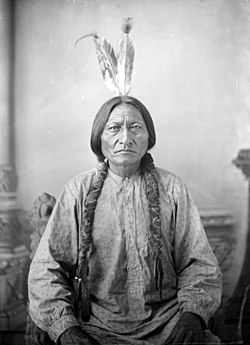First people

- Paleo-Indians settle the Americas. [1]
- List of archaeological periods (North America)
- Before 11000 BCE: Clovis culture
- Before 8000 BCE: Folsom tradition
- Circa 5000 BCE: Plains Archaic period begins with drier climate.
- Beginning 35th century BCE: Mound Builders begin living in eastern South Dakota, encompassing the Archaic, Woodland, and Mississippian cultures:
- 11th century BCE: The Woodland period begins in eastern South Dakota: the period between hunter-gatherers and agriculture that includes innovation in pottery, textiles, and tools. Climate improves to its modern state. Trade with farther cultures is common.
- 11th century: Agriculture begins with the Mississippian culture.
- 1325: More than 450 people were massacred at a Crow Creek village.
- 15th century: Arikara and other Plains Village people arrive and live along the Missouri River valley. [1]








